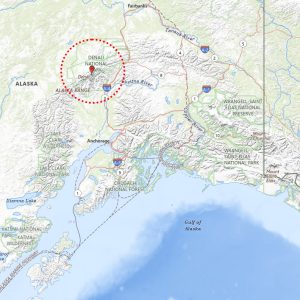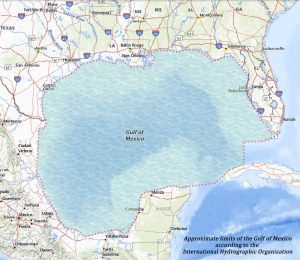On January 20, 2025, President Donald Trump signed an Executive Order titled “Restoring Names that Honor American Greatness.” Among other things, the order establishes a new name for the Gulf of Mexico and changes the name Denali (a mountain peak in Alaska) back to its former name, Mt. McKinley.
Specifically, the Order states:
Within 30 days of the date of this order, the Secretary of the Interior shall, consistent with 43 U.S.C. 364 through 364f, reinstate the name “Mount McKinley.” The Secretary shall subsequently update the Geographic Names Information System (GNIS) to reflect the renaming and reinstatement of Mount McKinley.
And:
…within 30 days of the date of this order, the Secretary of the Interior shall, consistent with 43 U.S.C. 364 through 364f, take all appropriate actions to rename as the “Gulf of America” the U.S. Continental Shelf area bounded on the northeast, north, and northwest by the States of Texas, Louisiana, Mississippi, Alabama and Florida and extending to the seaward boundary with Mexico and Cuba in the area formerly named as the Gulf of Mexico. The Secretary shall subsequently update the GNIS to reflect the renaming of the Gulf and remove all references to the Gulf of Mexico from the GNIS, consistent with applicable law.
Title 43 outlines regulations related to US public lands. 43 U.S.C. 364 through 364f define the role of the US BGN (Board on Geographic Names) and its authority to designate official names for features in the United States. The US BGN promulgates official names for domestic features through its Domestic Names Committee. GNIS is the repository of these official names.
The BGN’s Foreign Names Committee approves standardization and spelling of foreign names. The repository is the Geographic Names Server (GNS) maintained by the National Geospatial-Intelligence Agency. However, the Foreign Names Committee has no authority to name foreign or international features. Rather, its role is to promulgate which foreign names are approved for use by the US federal government.
Denali
Against this administrative background, the name change from Denali to Mt. McKinley is more straightforward than the Gulf of Mexico example. The mountain peak currently known as Denali is the tallest peak in North America, with an official elevation of 20,310 feet.

Denali has been called a lot of different names by a lot of different people over the years. The summary GNIS record lists dozens of variant names. The BGN officially recognized the name Mt. McKinley in 1917. On August 28, 2015, the name Mt. McKinley was changed by Executive Order of the Secretary of the Interior (under the Obama administration) to Denali, citing authority under 43 U.S.C. 364 through 364f.
Who was McKinley? William McKinley was US President from 1897 to 1901, when he was assassinated in Buffalo, New York. During his presidency, McKinley led the US into the Spanish-American war, which resulted in US control of Hawaii, Puerto Rico, Guam and the Philippines.
Denali is a local Athabascan (Native American) name. It has been the official name in the State of Alaska for the mountain since 1975.
Conclusion: As far as the federal government and GNIS are concerned, the name can be changed back to Mt. McKinley. However, Denali will still likely remain the official name in Alaska, and map-makers may or may not comply with the change, assuming that it may be challenged or reversed (perhaps by the next administration).
Gulf of Mexico
The Gulf of Mexico is a more complicated case, since this feature is not entirely within the boundaries of the United States. There is no international agency responsible for approving names of international features, although the BGN’s Foreign Names Committee does promulgate names approved for use by the US federal government, as noted above.
The International Hydrographic Association defines the feature approximately as shown in the map below.

As such, the feature also borders not only the US, but also Mexico and Cuba, neither of which is required (of course) to accept the name used in the United States. This is not the only water body with different names used by different nations. Other notable examples include the Persian Gulf/Arabian Gulf, the South China Sea/East Sea/East Philippine Sea, and the East Sea/Sea of Japan.
Conclusion: While usage of the term Gulf of America can be mandated for use by the US government, other nations do not have to follow suit. The language in the Executive Order stating that “The Secretary [of Interior] shall subsequently update the GNIS to reflect the renaming of the Gulf and remove all references to the Gulf of Mexico from the GNIS” is also problematic, since maintaining a record of variant names is important, not least of all to be able to read historic maps.
And So…?
So what will map-makers do? They face the choices they have always faced: use the conventional (widely accepted) name, use the official name, use different names depending on the purpose or audience for the map, or show multiple names. At this point, there is no role to be played by the Wisconsin Geographic Names Council, since neither Denali nor the Gulf of Mexico is anywhere close to Wisconsin. Other Executive Orders have impacted Wisconsin in the past, however. The most recent example is the Order to remove a pejorative Native American slur from maps.
